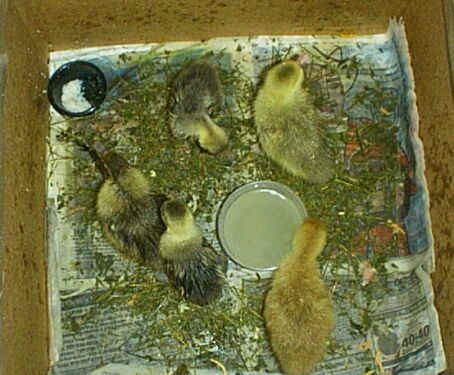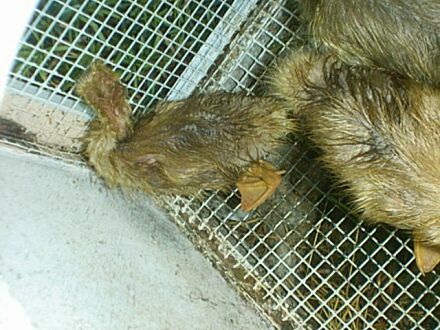Housing

Now, we will take a journey through Poultry Housing. We'll sort through the best of the best in Poultry Landscaping (of course, I'm a little biased).
Stage 1, Duckling/Gosling:
When the duckling first hatches it is probably best to keep him under a light or in the incubator for at least a day or three (varies depending where you live). In Florida, because it is so hot, a newborn needs only to be heated artificially for the first three days of its life. You could either put the duckling in a large brown box with a light positioned at the top, or place the incubator top on top of the box (which is what I do). Make sure the duckling does not dry out. If he does, he can die. Leave a shallow dish of water for the duckling to cool off in but not enough so it can wade deeply and possibly get sick from being too cold from it. Leave a lot of open space to enable air to flow through.

Stage 2, Big Duckling/Gosling:I keep my ducks in a paper box until they get too big. I try to keep them there as long as I can because, like it or not, being outside in a cage does make them considerably more wild and they will want to be outside more. SO, the next stage of housing for my ducks and geese is a rabbit cage. The above picture depicts this. The following picture is a different type of pen that is bottomless that I use with my geese. I would move it around and have them live in it during the day so they can eat grass while being protected.

Stage 3, Geese:Geese go a step higher. When they're full grown, they're too big for rabbit cages, so for them, a proper pen can be built. To start with, we built off of four wooden pikes. Cement blocks are used to cover the ground and acts as leverage for the cement boards which will be placed over them. This is for the floor of the pen. Then, wooden boards are nailed to make sides. They are nailed so that they connect the pikes to each other, while allowing half an inch of space between the bottom and itself. This means that there is a small extended crack at the bottom of the pen on both sides. This enables goose poop to be washed away easily with a hose. Otherwise, the poop gets stuck inside and things get rather messy. Fine rabbit wire mesh is built into the sides, which functions as windows (the windows must be made at the top). For the roof, cement boards can also be used. These work well because it keeps the heat out. If you want something cheaper, you could use light plastic roofing parts and screw them into the top. Plastic, however, gets extremely hot during the day.

Zach lookin' scrubby